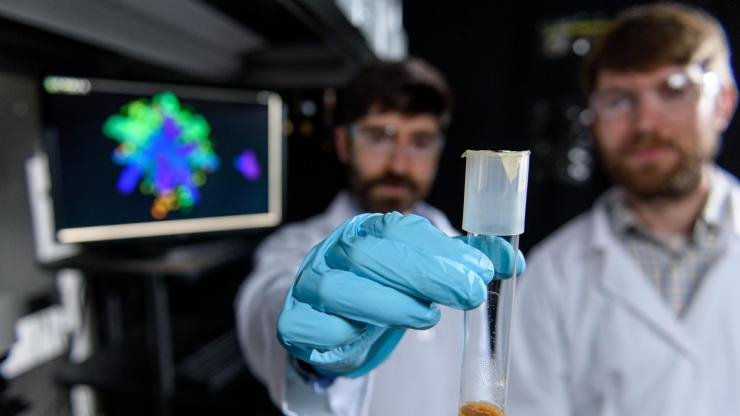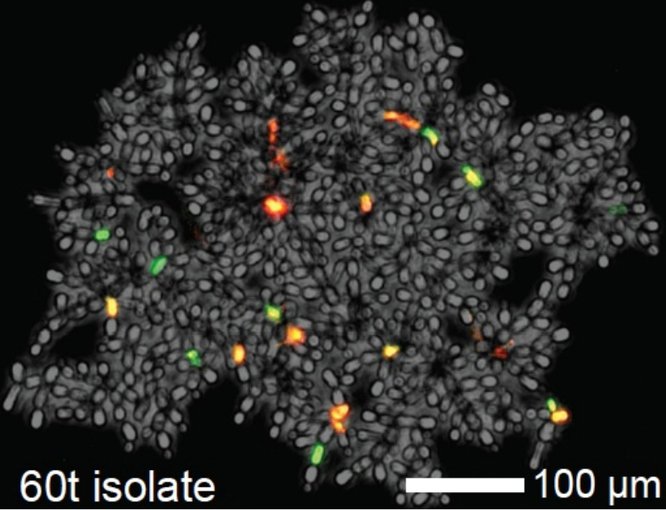
Jan. 18, 2018
Research Highlight
Saving Space to Lower Stress in the Evolution of Multicellularity

Physicist Peter Yunker and evolutionary biologist Will Ratcliff in Yunker's lab at Georgia Tech. Yunker holds a sample of nascent multicellular yeast clusters used in the experiments.Image credit: Georgia Tech / Rob Felt.
The evolution of multicellular life on Earth was a major step in the history of our planet’s biosphere. How multicellularity arose is difficult to understand, because crowding can introduce a number of challenges for individual cells. A new study approaches the question of multicellularity by addressing both biology and physics, and indicates that changes in cell shape may play a role.
A team of scientists observed the behavior of yeast over an eight week period, and found that they evolved more elongated cells. This elongation served to reduce the intensity of packing in the interior of cell clusters. The researchers then compressed cell clusters composed of the varying cell shapes to see how much energy they could tolerate before fragmenting. Cell clusters with elongated cells fared much better than those composed of round, ancestral cells.

Snowflake yeast after 60 days of selection. Green cells are undergoing programmed cell death (apoptosis), red cells are dead, and orange cells have recently died from apoptosis.Image credit: William Ratcliff, snowflakeyeastlab; Ratcliff et al. (2015) PNAS, 109(5), 1595-1600..
An accompanying News and Views piece, “Space-saving tips to lower stress,” helps contextualize the work, and was also published in Nature: Physics.
The study was performed by a team of researchers based the Georgia Institute of Technology (Georgia Tech). A full article from Georgia Tech concerning the research results can be found at: http://www.rh.gatech.edu/news/599147/when-physics-gives-evolution-leg-breaking-one.
The paper, “ Cellular packing, mechanical stress and the evolution of multicellularity,” was published in the journal Nature: Physics. The work was supported by NASA Astrobiology through the Exobiology & Evolutionary Biology Program.